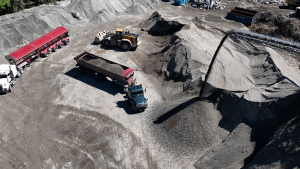Proponents of prefabrication in construction speak of its numerous efficiencies.
In an industry where time is money, the quality and consistency of components combined with quick on-site assembly means improved productivity. Overall, this means a faster project from start to finish, which in turn improves the bottom line for all parties.
Concurrently, the carbon associated with the construction process, including the embodied carbons within the building materials themselves, are regular headline news within the industry.
Now, a study conducted by researchers at two U.K. universities has quantified the correlation between prefabrication and carbon. The key finding: the more prefabrication, the less carbon.
The study, titled Life Cycle Assessments of The Valentine, Gants Hill, UK and George Street, Croydon, UK, examined two modular housing developments representing 900 housing units. One was a 10-storey student housing block. The other was the world’s tallest completed modular project, specifically a pair of apartment towers, one 38 storeys and the other 44 storeys. Both volumetric projects were designed by HTA Design and built by Tide Construction and Vision Modular, the two companies that commissioned the study.
The researchers at the University of Cambridge and Edinburgh Napier University determined that 28,000 tons of carbon was saved on these two projects as a result of prefabrication and onsite assembly processes, a 45 per cent overall reduction versus traditional methods.
Prefabrication encompasses a wide range of modular elements. Factory-built construction can include complete plug-in volumetric units seen in hotels, apartments and some medical facilities. It also can include wall and floor structures and certain MEP elements. Assembly times can be reduced by as much as 50 per cent versus traditional bespoke methods and with far less emitted carbons as a result.
The carbon savings identified in the U.K. study related to the reduction of concrete and steel used in the designs, less site transportation of material and workers, and reduced emissions on the worksite itself. Further carbon reductions can be traced to the efficiencies and less waste in the prefabrication factories themselves.
Modular innovation has moved beyond structural componentry to include building exteriors as well.
UnitiWall, a new Canadian company based in Mississauga, Ont., is combining factory-built, highly insulated exterior wall assemblies that can be installed quickly onsite by a small crew. The company made its debut as a sponsor of the recent 2022 Passive House Canada Conference in Victoria.
UnitiWall’s 75,000-square-foot wall assembly manufacturing facility begins full production of its patent-pending, non-combustible Thermal PlenumTM Technology in July. The company will offer extensive architectural design options and customized panel sizes from 10-foot-wide to 14-foot-high in a wide palette of exterior materials, in combination with integrated high-performance triple pane windows. Depending on wall-to-window ratios and the exterior materials selected, the overall effective performance of UnitiWall’s thermally-broken unibody assemblies can be as high as R30, even beyond.
Prefabrication of walls, columns, beams and floor panels is also playing a large role in the increasing appeal of mass timber construction. Even precast concrete elements can be incorporated as part of the modular process. In both cases, faster assembly means reductions of onsite carbon emissions and associated truck traffic.
Growth of prefabricated methodology is progressing in Canada but at a slower pace than in other parts of the world. Distances between factories and worksites are an issue. The constraints of highway transportation are challenges seen here and in the United States. Improved regulatory frameworks in both countries would offer consistency across state and provincial jurisdictions.
However, those designers and builders who have forged ahead and are presently working with prefabricated units and components offer positive reports. According to industry studies, 90 per cent of builders report efficiencies across a number of metrics, with 80 per cent reporting improved project cost predictability, reduced waste and increased customer satisfaction.
These recent U.K. study findings, combined with an increased understanding of prefabrication’s overall project efficiencies, should help overcome the construction industry’s inherent resistance to change and result in further acceptance.
John Bleasby is a Coldwater, Ont.-based freelance writer. Send comments and Climate and Construction column ideas to editor@dailycommercialnews.com.






Recent Comments